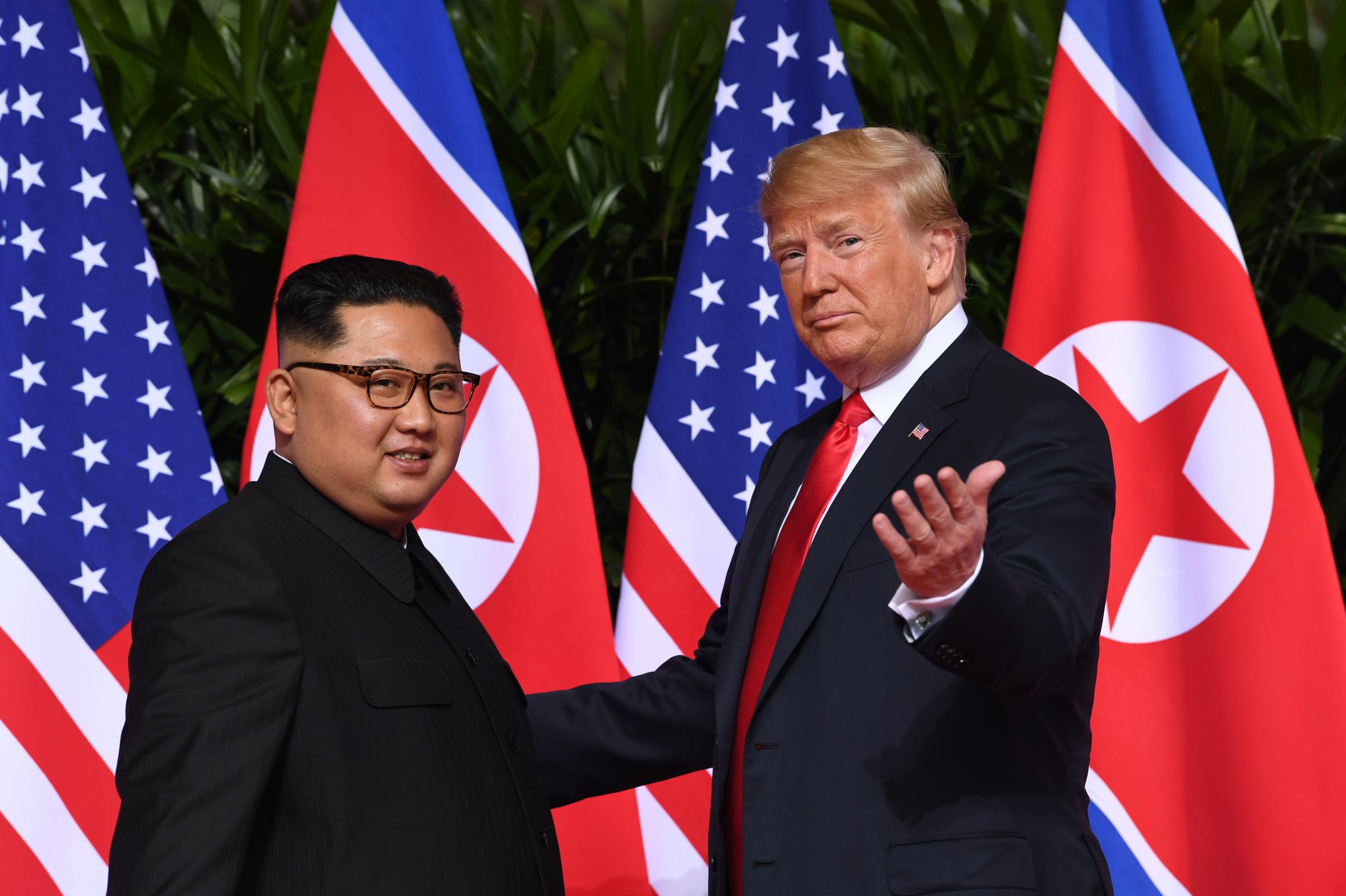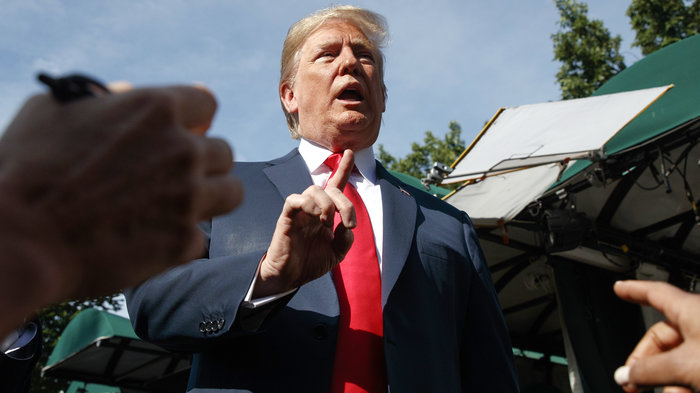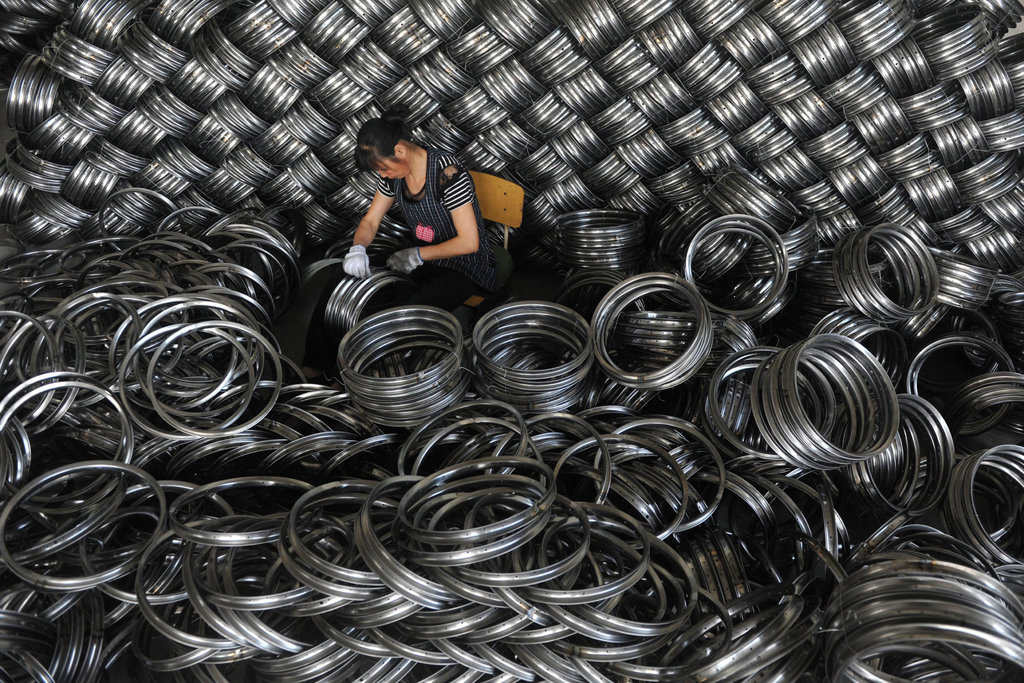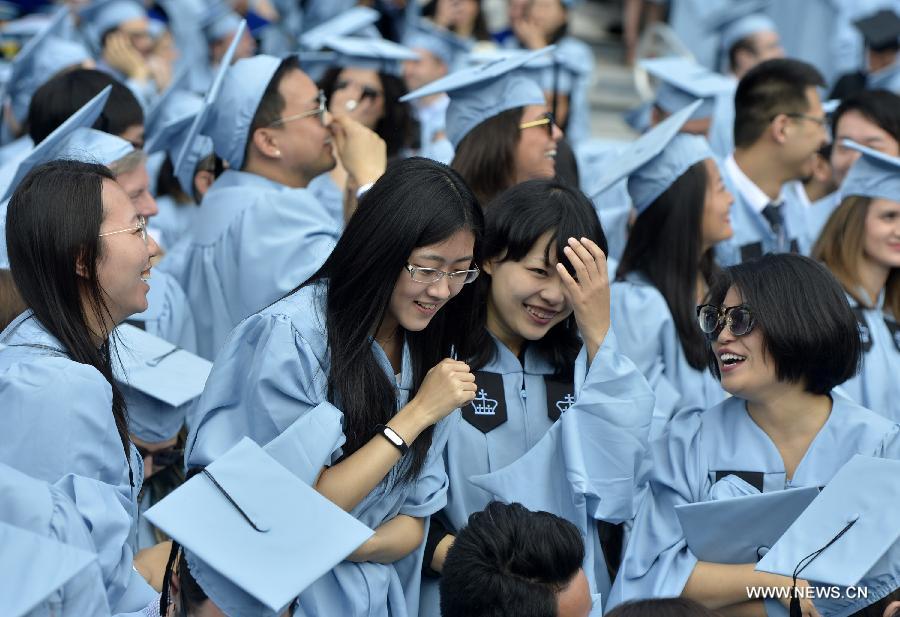
 How "Comprehensive" Is the Kim-Trump Agreement?
How "Comprehensive" Is the Kim-Trump Agreement?After months of diplomatic overtures, on Tuesday, the world watched as the summit between two leaders who had denounced and insulted each other only months earlier appeared to roll off without a hitch. Meeting in an exclusive hotel on the island of Sentosa, Singapore, President Trump and Kim Jong Un shook hands and announced their commitment to a new friendship. "I think he trusts me, and I trust him," President Trump later said to reporters. Aside from the summit's political optics, which both President Trump and Kim will likely consider a "win," arguably the most important outcome is the joint statement both leaders signed, which, in Trump's words, was "comprehensive." But how comprehensive was it?
Aside from affirming a commitment to a new relationship between North Korea and the U.S., the agreement states that North Korea commits to "work toward complete denuclearization of the Korean Peninsula." However, as Maria Coduti argued for China-US Focus, both countries perceive denuclearization very differently, and the statement did not define the term nor provide a timeline. President Trump offered "security guarantees" in return, which many commentators have interpreted as a huge concession. "Kim came away with an unexpected gift," Steven Collinson wrote for CNN. "Trump shocked his allies in Seoul and his own military by calling a halt to joint U.S.-South Korean military exercises." Analysts in other countries, including South Korea, were more optimistic. "The agreement fell short of expectations," an article in South Korea's Yonhap News reads. "But marks a meaningful start on an issue that used to be a nonstarter."
In Beijing to debrief Chinese Foreign Minister Wang Yi on the summit, U.S. Secretary of State Mike Pompeo thanked President Xi for "his role in helping bring North Korea to the negotiating table." In China, receptions to the summit were mixed, but largely positive. "It remains to be seen if it was the defining moment in history it was being billed as," an editorial in China Daily on Tuesday read.
Writing for China-US Focus this week, Fan Jishe of the Chinese Academy of Social Sciences argued, "Talk is cheap. By meeting briefly in Singapore, certainly both could declare diplomatic victory, but the coming months will put words to the test."
 Trump Slaps Tariffs on Chinese Products
Trump Slaps Tariffs on Chinese ProductsOn Friday morning, President Trump followed through on his threats to increase tariffs on Chinese imports, signaling the movement of the two mega-economies toward a trade war. The Trump administration announced a 25% tariff on $50 billion worth of Chinese goods "that contain industrially significant technologies" from the aerospace, robotics, auto, and manufacturing industries. The U.S. will begin collecting these tariffs on July 6. Beijing quickly responded Friday that it would take retaliatory action to protect its interests by introducing its own tariffs, which many analysts predict will target key industrial states with large proportions of Trump voters. Adding insult to injury, the White House announced these tariffs today, on President Xi Jinping's 65th birthday.
Yang Wenjing argued for China-US Focus this week that Trump's trade war with China reflects a desire to reduce the Chinese trade surplus vis-a-vis the United States, as well as concerns on the part of American officials that China would lead the international economy "while [the United States'] own ability to lead is weakening." According to CNN Money, Trump's trade penalties are designed as a punishment for China's theft of U.S. intellectual property and unfair trade practices, but U.S. industry leaders and consumers have voiced their own concerns about the impact of the tariffs on American businesses. During hearings held May 15 - 17 by the U.S. Trade Representative, Robert Lighthizer, various industries sent witnesses to attempt to remove products from the tariff list, or to prevent the trade barrier altogether. The New York Times reports that although President Trump's own advisors were divided on how to proceed with the tariffs, those advocating a hard-line trade policy with China appear to have won the debate. On June 30, the White House is expected to announce further restrictions on Chinese investments in the United States as well as limitations on exports of advanced technology.
 Faltering Chinese Economic Growth Poses Questions for the Future
Faltering Chinese Economic Growth Poses Questions for the FutureWhile much attention has been paid to the possible implications of the escalating trade war between the United States and China, economists and businesspeople are beginning to cast a concerned eye toward the future of China's economic growth, too. Domestically, the manner in which Beijing has chosen to curb borrowing has drastically impacted China's small business sector in recent months. As small businesses seek loans to expand, they are blocked by government efforts to decrease borrowing; efforts that began after both Moody's and Standard & Poor's downgraded the Chinese sovereign debt rating last year. Investment, retail sales and industrial production all slowed in May, according to new data from the National Bureau of Statistics released in Beijing on Thursday.
In attempting to reduce China's expanding debt, the government may be killing the golden goose of the global economy. As The New York Times notes, other countries' economies are highly integrated with China's due to the nation's role as both a powerful producer and consumer. Therefore, China's economic slowdown may come as a huge blow to a global economic system already mired in uncertainty and tension. Over the first quarter of 2018, the Chinese economy reported growth of 6.8%, the same as last year. By contrast, China's regional competitor India posted very positive numbers in the beginning of 2018, showing an annual growth rate of 7.7%, significantly above its 5.6% growth a year ago.
Louis Kuijs of Oxford Economics told the South China Morning Post that China's growth rate may continue to slow. "We have been expecting the economy to slow down for a long time," he said. "Until recently, it looked more resilient . . . [but] the May data indicate that all of what we call expenditure components [investment, retail sales and exports] have weakened quite significantly. And we expect it to slow further."
Is this the end of China's spectacular economic growth? Bian Xiaochun is more optimistic. In an article for China-US Focus last week, she pointed to the innovative goals of the "Made in 2025" initiative as a possible source of solid growth. "Development in industries like chips, robots, and AI. . .will help propel China to the higher end of the global value chain in the 21st century," she wrote.
 This Week's Top Commentary
This Week's Top CommentaryWith the Trump administration's announcement of tightened visa restrictions on Chinese graduate students studying in advanced technical fields like robotics, aviation, and high-tech manufacturing, many were left wondering how the ongoing tech arms race between the United States and China would be impacted. This week, Matt Sheehan weighed in on both sides of the debate, posing the question: "Who loses when the United States takes in fewer Chinese graduate students?"
"The answer to that question comes down to weighing two counter-balancing impacts on Chinese innovation," Sheehan explains. "Will China lose more from missing out on the knowledge its returning PhDs would have gained from training in the United States? Or will China gain more by holding onto its most promising PhDs who now won't go to the United States in the first place?" Read the full article here.
Prepared by China-US Focus editorial teams in Hong Kong and New York, this weekly newsletter offers you snap shots of latest trends and developments emerging from China every week, while adding a dose of historical perspective.
- 2018-06-08 China Awards Putin First Medal of Friendship
- 2018-06-01 USPACOM Rebranded As U.S. Indo-Pacific Command
- 2018-05-25 Trump Cancels North Korea Meeting
- 2018-05-18 The On/Off Trump-Kim Summit
- 2018-05-11 American Goods Are Stuck at Chinese Ports
- 2018-05-04 China and the U.S. Lay Trade Demands on the Table
- 2018-04-27 U.S. Delegation Will Visit China Next Week
- 2018-04-20 China and the U.S. Seek Allies in Trade Dispute
- 2018-04-13 President Xi Reviews the PLA Navy
- 2018-04-06 China and Russia Pledge Military Cooperation in a Signal to the United States
- 2018-03-30 Kim Jong Un Visits Beijing on First Overseas Visit
- 2018-03-23 President Trump Asks for Tariffs on Around $50 Billion Worth of Chinese Imports
- 2018-03-16 Tillerson to be Replaced by Mike Pompeo as Secretary of State
- 2018-03-09 President Trump Agrees to Meet Kim Jong-Un
- 2018-03-02 U.S. Imposes Tariffs on Chinese Aluminum
- 2018-02-23 A Week of Developments Related to North Korea
- 2018-02-16 Cui Tiankai says U.S. Should Not Advocate Confrontational Strategy Towards China
- 2018-02-09 China Releases the “No.1 Central Document” Containing New Rural Policies
- 2018-02-02 Wang Qishan Appointed to the National Legislature
- 2018-01-26 New Edition of the Focus Digest